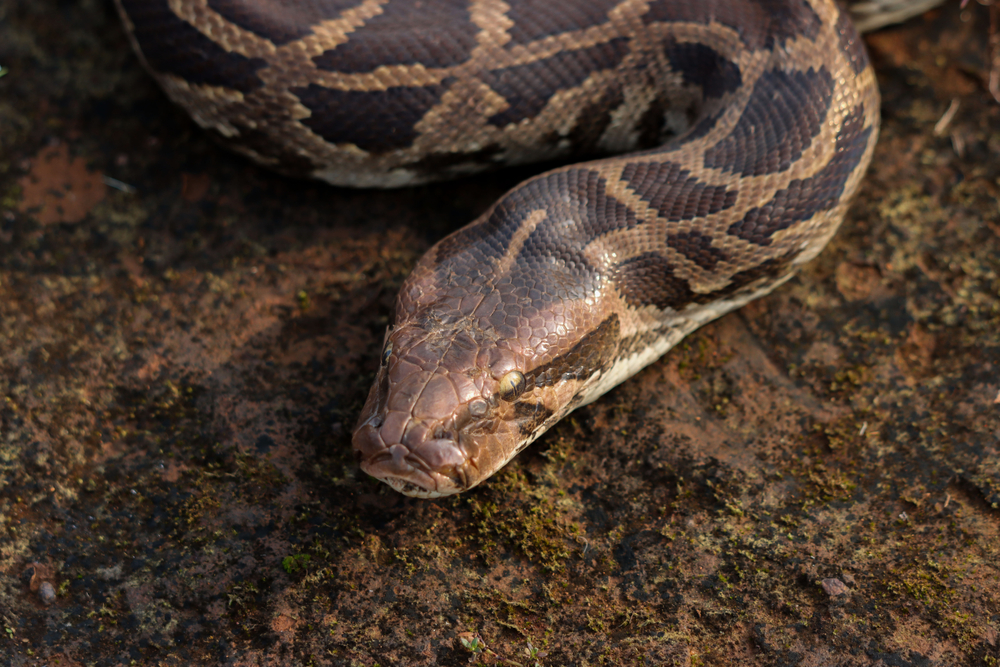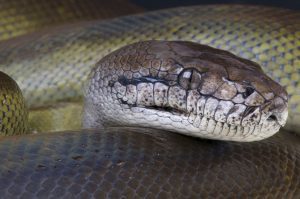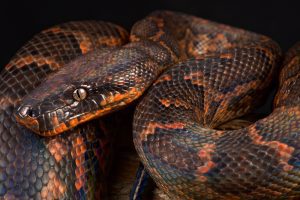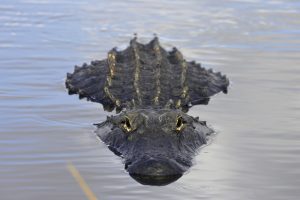Though some reports are exaggerated, snakes can grow to massive sizes. The biggest snakes in the world are part of the boa and python families.
Which family has the biggest snakes is determined by whether you are measuring the reptiles’ length or weight. Although man-eating snakes are extremely uncommon (it is known to occur, however), there really are a few massive species that are slithering around across the globe.
The green anaconda is the largest snake in the world in terms of mass. It is among the largest snakes around and can have a massive girth of up to 12 inches.
The heaviest anaconda on record weighed 500 pounds. This enormous snake was nearly 27 feet long with a girth of 3.5 feet!
Table of Contents
Introducing the green anaconda
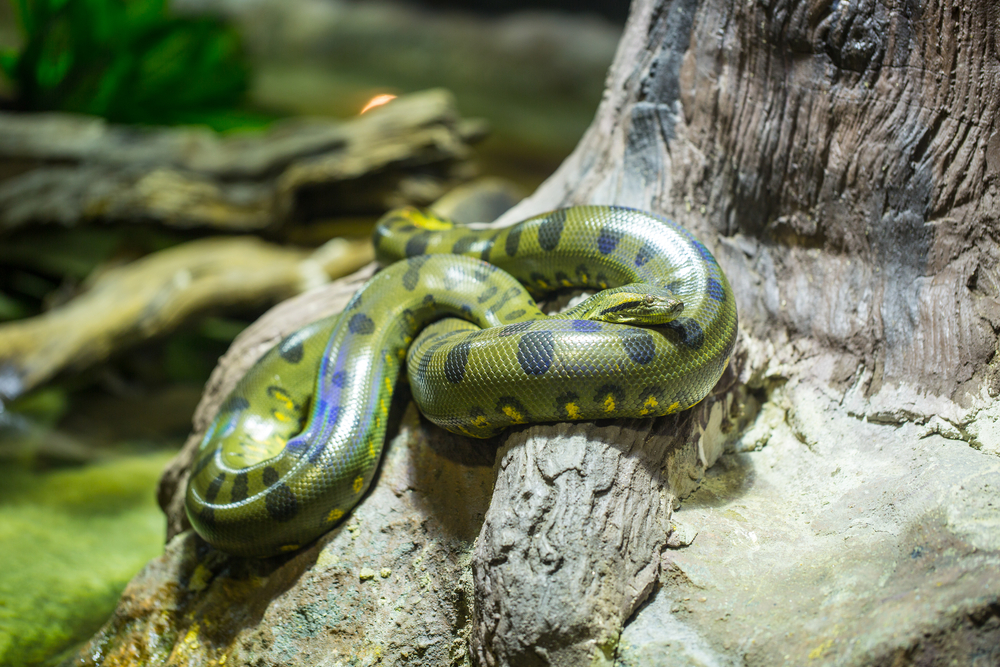
When people think of massive anacondas, they are usually thinking of the green anaconda – the largest species of snakes on earth.
A unique characteristic of this dimorphic (existing in two types, in this instance male in female and male forms) snake is that females are considerably larger than males. The bigger the snake, the more offspring will be born from each egg clutch.
These magnificent snakes hold an important spot on the map of South American mythology, often being depicted as magical creatures that can change shape or heal. The enormous green anaconda feeds on caiman, capybara, and deer.
Anatomy of the green anaconda
The green anaconda is impressive in size, often exceeding 30 feet in length, 12 inches in diameter, and weighing more than 550 pounds. Green anacondas are a dark, olive-brown color with large, dark spots that alternate across their backs and smaller oval spots that have yellow centers running along their sides.
Habitat of the green anaconda
The green anaconda is located in the northern part of South America. Due to its size, traveling across land is cumbersome for this snake, however, it is quite spry in the water.
It usually spends its time submerged looking for prey but occasionally is found in the trees, from where they drop down to catch prey by surprise.
Diet of the green anaconda

Green anacondas eat large rodents like deer, fish, tapirs, peccaries, capybaras, turtles, birds, sheep, dogs, reptiles that live in water, caiman, and even jaguars. After killing their prey, loosen their jaws, allowing them to take their prey head-first and whole, regardless of the size.
These large meals take a while to digest, which allows them to go for weeks and even months with no food. Young anacondas feed on small rodents as well as chicks, frogs, and fish.
The green anaconda’s worst enemy
Mature anacondas don’t have any natural predators. The greatest threat to their survival is the fear they invoke in humans; numerous anacondas have been killed by those afraid of the giant anaconda.
Humans hunt anacondas for their skin, which are used for decoration or made into leather. Habitat loss and deforestation are also significant threats.
Easily confused: anacondas and boa constrictors
A jungle of names
Sloppy naming has led to a mess of confusion when it comes to distinguishing between anacondas and boa constrictors.
Anacondas are boas. They kill their prey by constriction (suffocation) which makes them a kind of boa constrictor.
However, there is a species of snake called boa constrictor in the family “Boidae,” the same family to which anacondas belong. So, the two reptiles share the same family but are different species.
Although boas and anacondas belong to the same biological classification and order, they differ in their sub-family classification.
Anacondas, although boas, belong to a different species than boa constrictors.
Interestingly, boa constrictors are one of only a few rare examples of animals having the same scientific and common English name.
Anacondas and boa constrictors compared
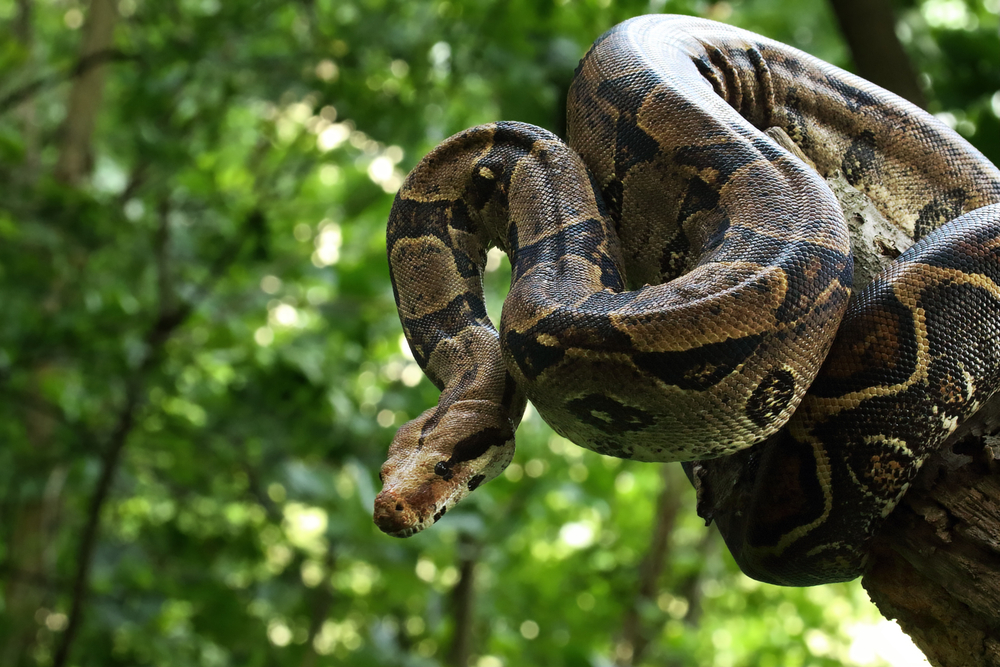
Are anacondas boa constrictors? Because anacondas, boa constrictors, and reticulated pythons are among the world’s largest snakes, people often confuse which one is which.
Remember that although the anaconda is a kind of boa, it is also a distinct snake species. The other thing to remember is that there are two groups of snakes, the pythons, and boas.
How are anacondas different from boa constrictors? Although boa constrictors and anacondas are part of the Boidae family, there are distinct differences.
Boa constrictors are popular pets (but be sure to read the next paragraph!) that can grow up to around 10 feet, while anacondas are huge snakes over 30 feet long and aren’t usually kept as pets.
Adult boas range between 6 and 14 feet in length. It is common for adults to hit 13 feet when they reach 25–30 years old.
Boa constrictors are predators and frequently cause injury or death to human beings, making them an undesirable pet choice for households with children.
Pythons, constrictors, and anacondas
Pythons are also constrictors. Pythons take their prey by their teeth and then squeeze their prey by wrapping its body around it tightly, crushing it to the point that the prey ceases to breathe.
It used to be thought that when pythons squeeze their victims, they don’t actually damage their victim’s bones. Instead, they make it impossible for the victim to breathe.
Each time the prey lets out a breath, the python squeezes harder until the prey dies. However, new research (discussed below) seems to falsify this idea.
How constrictors kill their prey
A new study has revealed that these large, non-venomous serpents subdue their prey using the quicker and more efficient method of cutting off their blood supply.
What we now think happens when constrictors kill
When a boa wraps its body around its target, it disrupts the delicately tuned circulation system. Pressure in the arteries drops, and venous pressure rises, causing blood vessels to shrink.
According to one of the scientists who conducted the research, the victim’s heart simply isn’t powerful enough to overcome the pressure exerted by the snake and get the blood flowing to its body’s vital organs.
Many animals can endure for a long time without breathing. Consider, for instance, drowning people who are later revived.
However, the same cannot be said for a person or animal without a heartbeat.
The ten largest snakes in the world, from smallest to largest
Those with ophidiophobia (a fear of snakes) will be uncomfortable to know that anacondas aren’t the only large snakes slithering around the globe.
How big can some of the largest species of snakes get? Let’s take a look at the ten largest species.
10th place: Papuan Olive Python
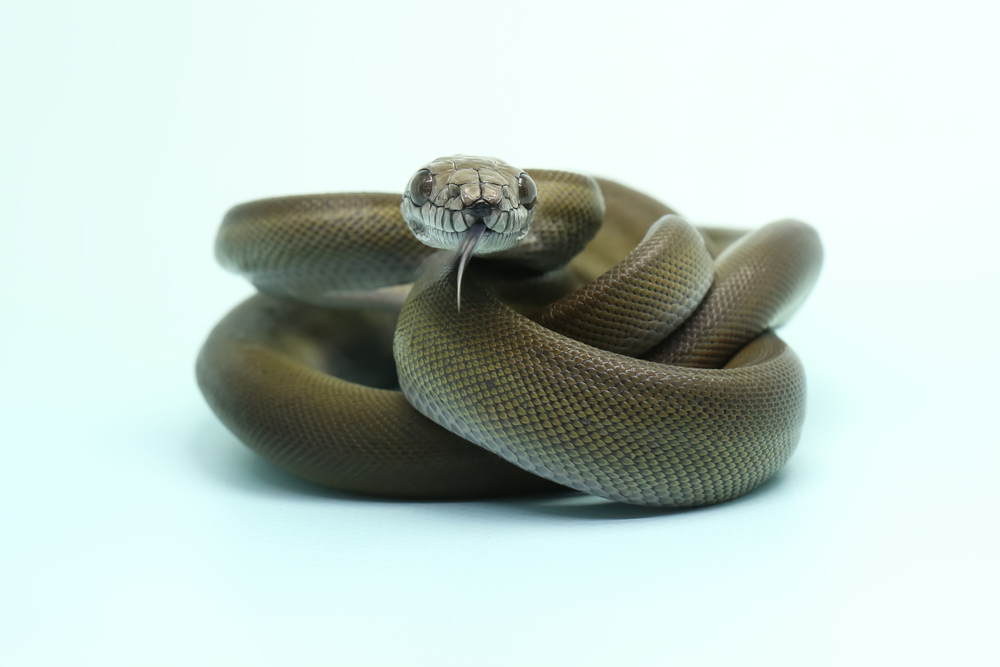
- Location: New Guinea
- Length: 14.4 ft
- Weight: 50 lbs.
- Family: Pythonidae
This snake’s diet is mainly composed of small mammals; however, Papuan olive pythons have also been seen eating other snakes.
While many people might consider them terrifying if they were encountered in the wild, they are also known to be quite gentle and friendly even when being handled.
9th place: Cuban Boa
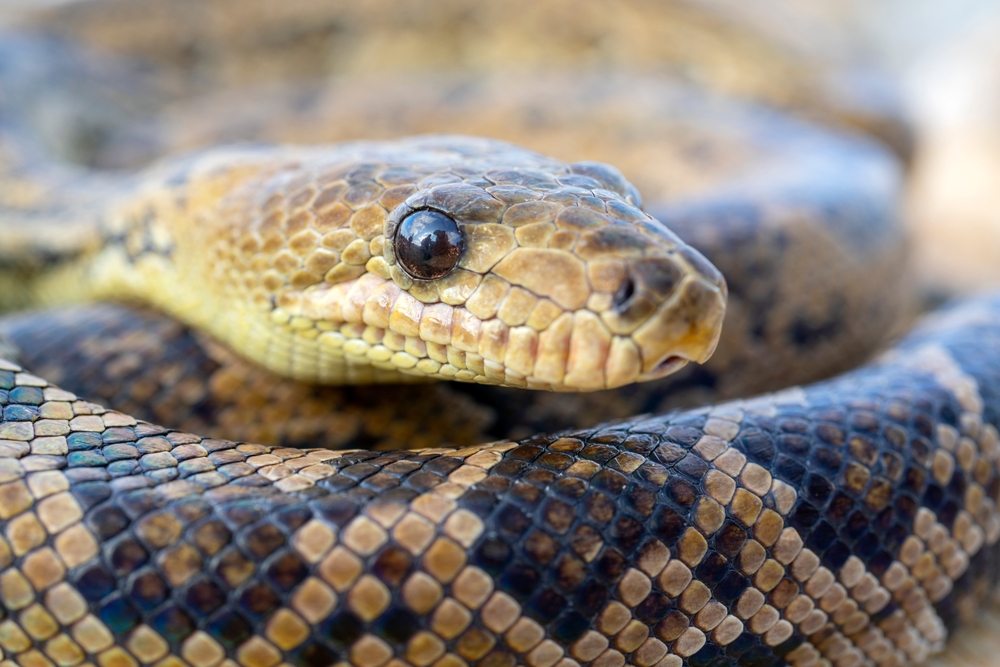
- Location: Cuba
- Length: 16 ft
- Weight: 60 lbs.
- Family: Boidae
This species is distinct from other snakes because it frequently hunts in groups. Because they threaten livestock, farmers often kill these snakes on sight, an action that unfortunately threatens the species.
8th place: Boa Constrictor
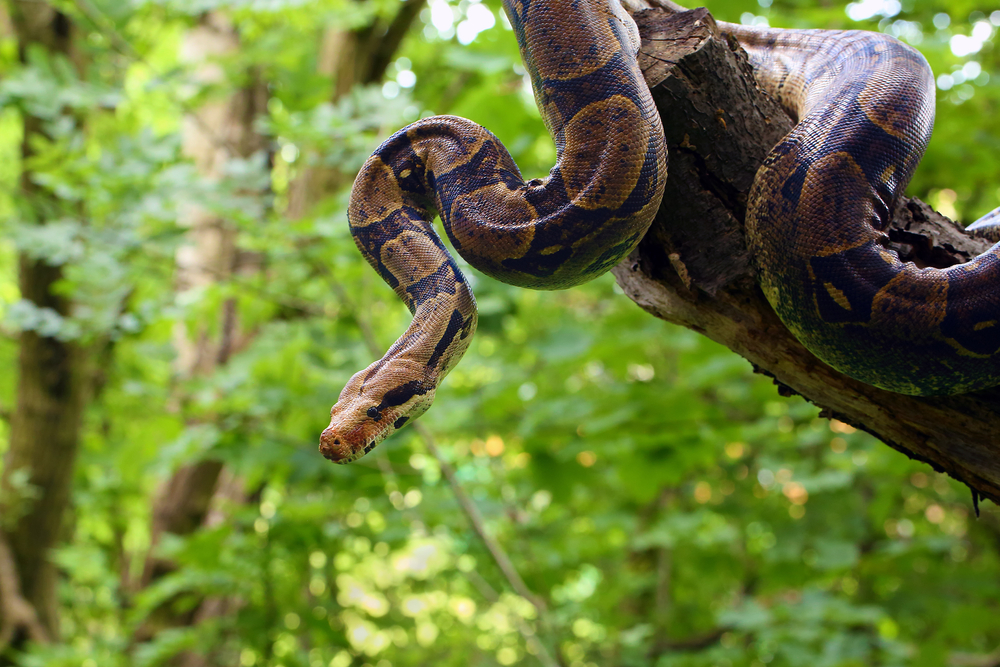
- Location: Central and South America
- Length: 14 ft
- Weight: 99 lbs.
- Family: Boidae
Boa constrictors have sharp, backward-curving teeth, which are great for catching prey. After catching its prey, this strong snake will tightly wrap around its prey, then constrict until it chokes.
7th place: Yellow Anaconda
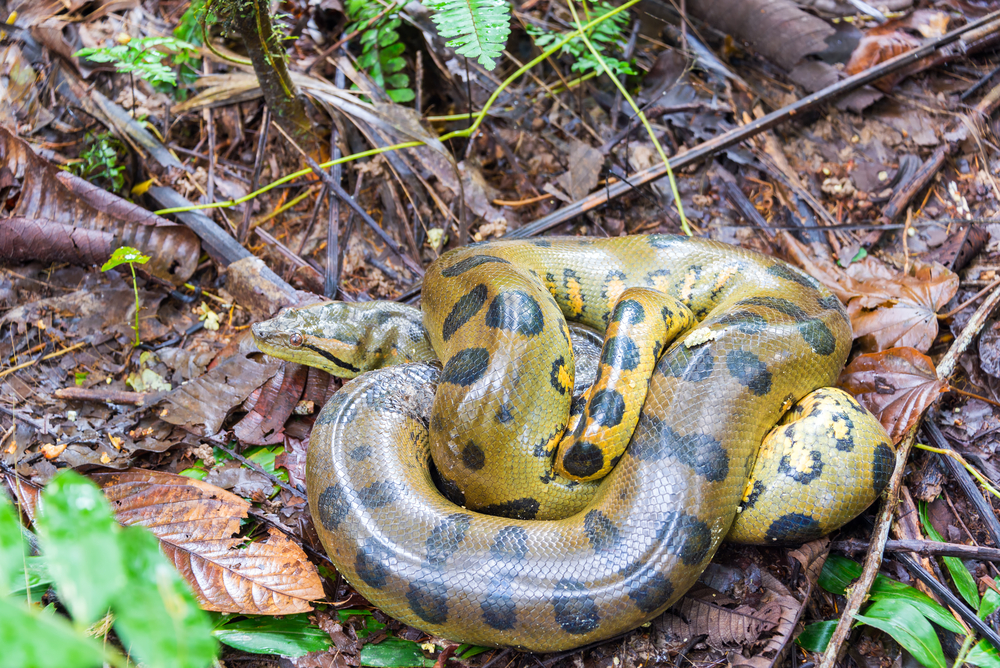
- Location: South America
- Length: 15.5 ft
- Weight: 120 lbs.
- Family: Boidae
This strikingly vibrant reptile is aquatic and is primarily found in swamps, marshes, and rivers. Even the mating and courtship process takes its place within the waters.
When yellow anacondas enter forests, they usually hunt for big game, such as peccaries and deer.
6th place: Indian Python
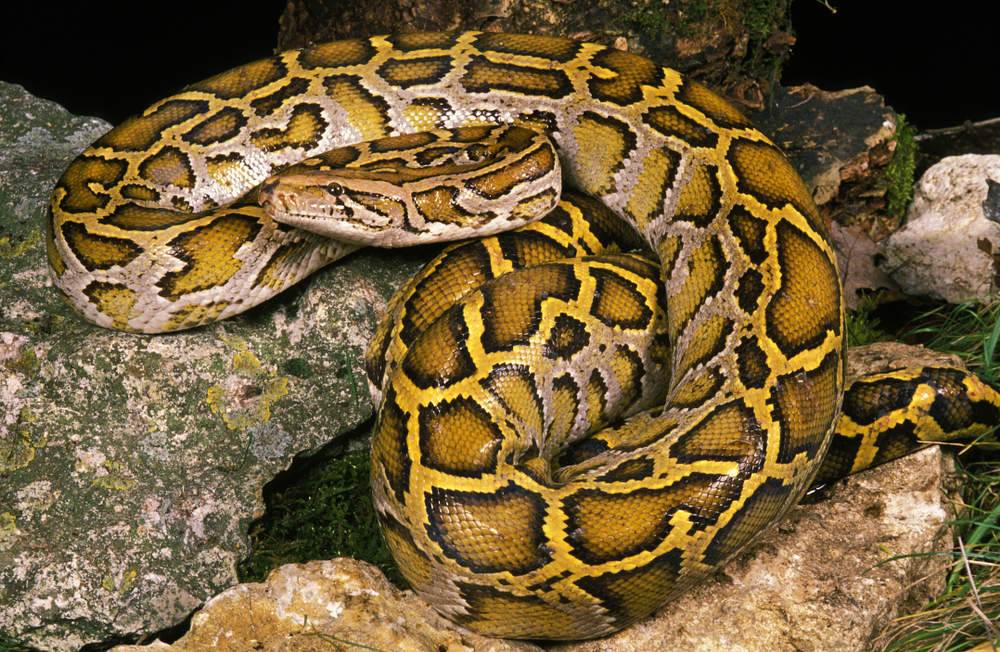
- Location: Southern Asia
- Length: 21 ft
- Weight: 200 lbs.
- Family: Pythonidae
Found mainly in India, the East Indies, and Sri Lanka, this imposing constrictor seems to be bigger in Indian forests than in other regions. The Indian python’s habitat tends to vary greatly, covering everything from grasslands and foothills to swamps and forests.
5th place: Amethystine (Scrub) Python
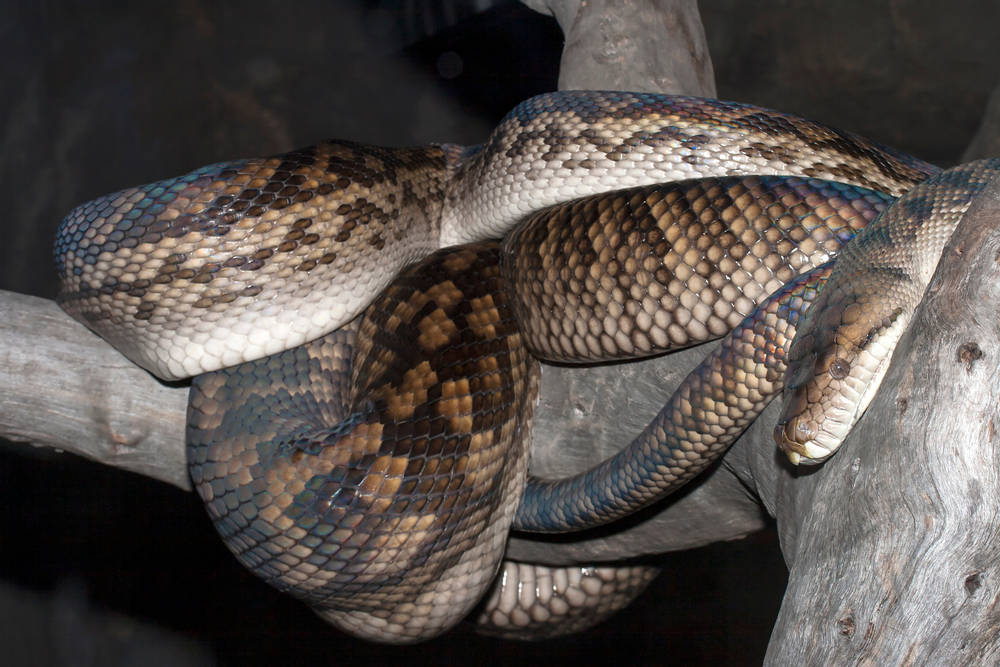
- Location: Australia
- Length: 26 ft
- Weight: 200 lbs.
- Family: Pythonidae
Apart from its primary places of residence in Australia, the stunning amethystine python can also be found in New Guinea. This impressive snake is renowned for its quiet nature but irritability when disturbed.
It is named in honor of the stunning blue shimmer its skin reflects under certain lighting conditions.
4th place: African Rock Python
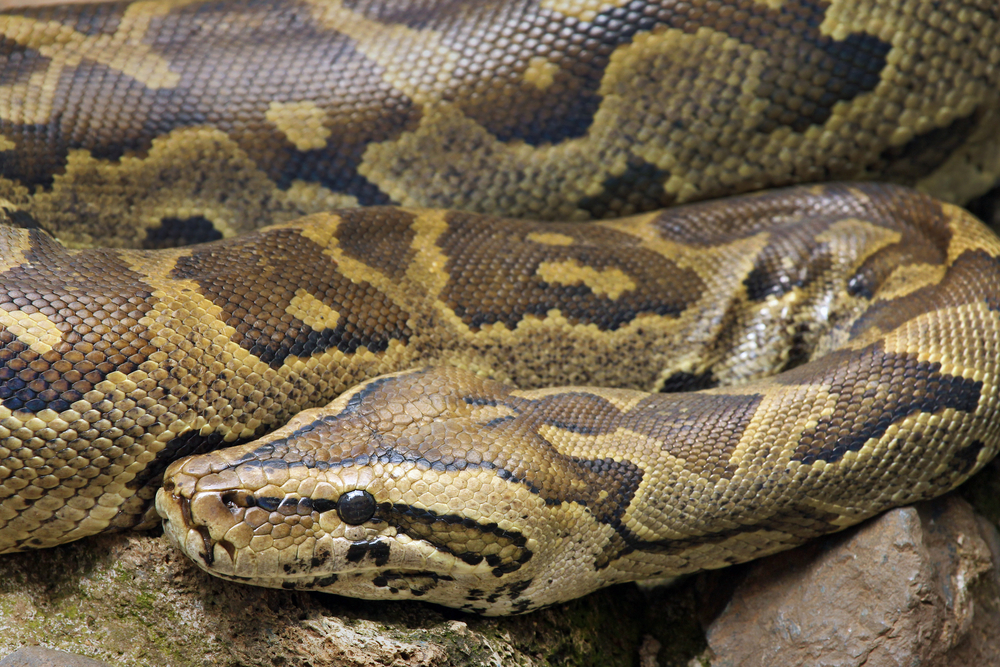
- Location: Africa
- Length: 25 ft
- Weight: 250 lbs.
- Family: Pythonidae
This snake is believed to be the biggest snake species in Africa. This magnificent reptile is active during wet seasons and is usually dormant when it is not raining.
The African rock python has a terrible reputation due to its size and intimidating appearance. However, there aren’t many reports of human attacks.
3rd place: Reticulated Python
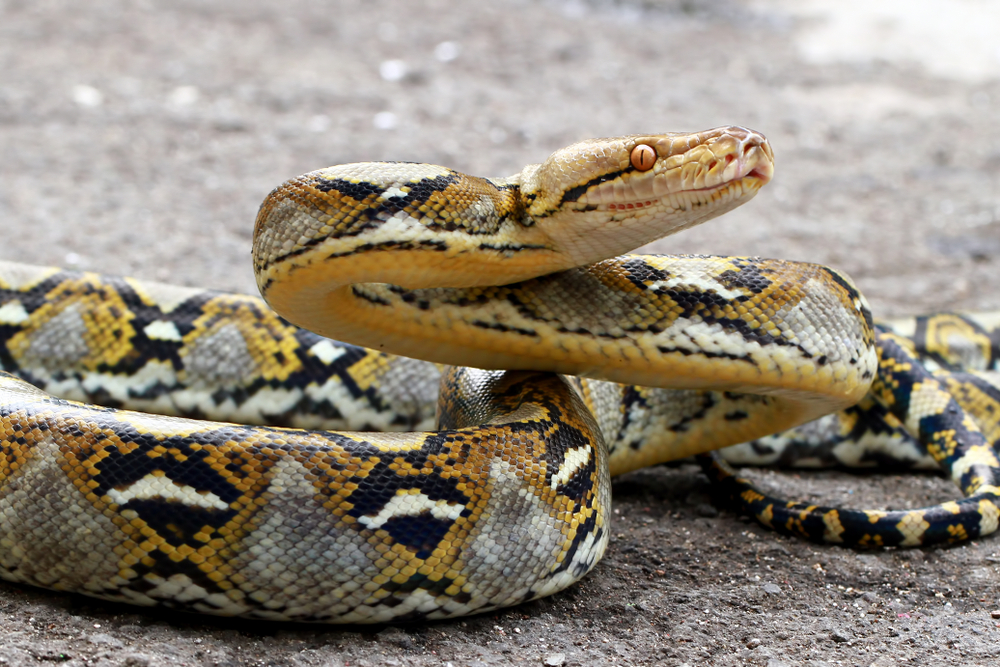
- Location: Southeast Asia
- Length: 33 ft
- Weight: 350 lbs.
- Family: Pythonidae
The reticulated python seems to prefer to wait in ambush then suddenly lash out and constrict its prey. However, these animals have frequently been observed actively hunting for food too.
Similar to other large snakes, reticulated pythons have a low metabolism and can sustain lengthy periods between meals.
2nd place: Burmese Python

- Location: Southeast Asia
- Length: 18.8 ft
- Weight: 403 lbs.
- Family: Pythonidae
This colossal python is highly active and has been known to change habitats throughout its life. Burmese pythons, when young, spend the majority of their time in the forest creeping in trees.
When they mature and become too heavy and oversized to climb quickly, they spend more time on the forest floor or in water.
1st place: Green Anaconda

- Location: South America
- Length: 30 ft
- Weight: 550 lbs.
- Family: Boidae
The biggest of them all, female green anacondas are the largest snakes on the planet. Here are some more interesting facts about these incredible reptiles.
Jaguars and anacondas
Although rare, anacondas have been known to kill jaguars, and jaguars have been known to kill anacondas. However, in both cases, this only occurs when the attacker is much larger than the victim.
Legends about green anacondas
Various local legends claim that green anacondas as long as 40–60 feet have been sighted. However, none of these stories have ever been confirmed and there is a high probability that they have been exaggerated. But who really knows? The jungle is a wild place.

